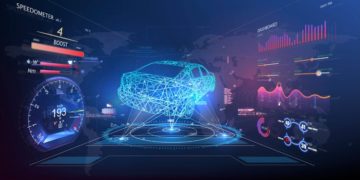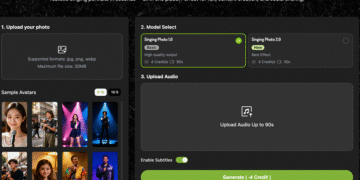Global businesses process millions of documents daily, contracts, invoices, ID proofs, compliance forms, often in multiple languages and scripts. Manually handling these documents is inefficient and error-prone. That’s why enterprises are turning to text recognition software to automate data capture, improve accuracy, and ensure compliance across diverse markets.
Modern solutions are no longer limited to English or simple print. Advances in OCR (Optical Character Recognition), NLP (Natural Language Processing), and AI now enable software to process dozens of global languages and scripts, from Mandarin and Arabic to Cyrillic and Hindi. This multilingual capability is transforming finance, logistics, healthcare, and beyond.
What is Text Recognition Software?
Text recognition software converts printed, scanned, or handwritten text into machine-readable data that digital systems can process. Modern solutions go beyond legacy OCR by supporting multilingual recognition, handling diverse scripts, formats, and even handwritten text.
A 2025 study on AI-Powered Multilingual OCR using deep learning achieved 92.5% OCR accuracy and 95% language detection success across ten languages, including English, Hindi, French, and Arabic, showing how AI makes text extraction far more reliable and scalable for global use.
Why Multilingual Recognition Matters?
In a globalized economy, businesses rarely deal with documents in one language. Multilingual recognition ensures:
- Seamless Cross-Border Operations: Finance and logistics teams can process invoices, bills of lading, and contracts in multiple languages.
- Regulatory Compliance: Governments often require local-language invoices and tax records; recognition software ensures compliance while preserving accuracy.
- Faster Vendor Payments: Multilingual invoices and receipts are processed without delays or translation bottlenecks.
- Inclusive Accessibility: Organizations can digitize and search historical archives, legal documents, and records across diverse languages.
Advances in Text Recognition for Multilingual Documents
Recent advances in text recognition software have made it possible to process documents across multiple languages, formats, and scripts with higher accuracy. By combining AI, deep learning, and NLP, modern systems can handle complex layouts, handwritten text, and multilingual inputs,making cross-border operations faster, more accurate, and compliance-ready.
1. AI-Powered OCR
Deep learning models now adapt to multiple languages, fonts, and scripts without pre-training templates. AI also improves recognition of low-quality scans and complex layouts.
2. Natural Language Processing (NLP)
NLP enables contextual understanding, distinguishing between “date” as a timeline vs. “date” as an item, or recognizing currency formats across markets.
3. Intelligent Character Recognition (ICR)
ICR improves recognition of handwritten text, crucial for documents like medical prescriptions, legal notes, or bank forms in local scripts.
4. Script-Aware Models
Advanced OCR engines now support multi-script documents (e.g., invoices in English and Chinese on the same page), improving accuracy in global trade documents.
5. Cloud-Based Scalability
Cloud deployment ensures multilingual processing can scale to millions of documents, accessible globally and secured with enterprise-grade compliance.
Benefits of Text Recognition Software
Adopting advanced text recognition software delivers wide-ranging benefits for enterprises operating in multilingual and high-volume document environments:
- Speed & Efficiency: Processes thousands of documents in seconds, eliminating delays from manual data entry or translation.
- Higher Accuracy: AI-driven recognition reduces errors in complex, multilingual, or handwritten documents.
- Global Compliance: Creates searchable, auditable records that meet regional e-invoicing and documentation regulations.
- Scalability: Handles growing document volumes across diverse geographies without expanding headcount.
- Cost Savings: Reduces manual labor, translation costs, and rework caused by data entry mistakes.
- Business Insights: Unlocks unstructured data across languages, feeding analytics platforms for better decision-making.
- Improved Accessibility: Digitizes archives and multilingual content, making information universally searchable and shareable.
With these benefits, text recognition software is no longer just a support tool, it’s a strategic enabler for global business efficiency and intelligence.
Real-World Applications of Text Recognition Software
The power of text recognition software is most evident in how it’s applied across industries. By automating multilingual and complex document processing, organizations can reduce costs, improve compliance, and accelerate workflows.
- Finance & Accounting: Automates invoices, receipts, and tax documents in multiple languages, ensuring faster approvals and accurate compliance reporting.
- Healthcare: Digitizes patient records, prescriptions, and lab reports, even handwritten ones, making them searchable and easier to share securely.
- Logistics & Supply Chain: Processes customs declarations, shipping manifests, and bills of lading across different countries and languages, reducing clearance delays.
- Legal & Compliance: Converts multilingual contracts, case files, and government regulations into searchable, structured formats for audits and litigation support.
- Government & Public Services: Digitizes citizen forms, ID proofs, and archives in regional languages, improving accessibility and service delivery.
- Retail & E-commerce: Extracts data from receipts and supplier invoices to streamline vendor payments and customer refunds.
These applications show how text recognition is no longer just about digitizing documents, it’s about enabling global-scale automation and intelligence across industries.
Final Words
In today’s global economy, multilingual document processing is no longer optional, it’s a necessity. Enterprises that adopt text recognition software gain not just speed and accuracy, but also the ability to operate seamlessly across borders.
With AI, NLP, and cloud scalability driving the next wave of innovation, text recognition is transforming into a cornerstone of global digital operations. The businesses that invest now will be the ones turning multilingual complexity into a competitive advantage tomorrow.











































































